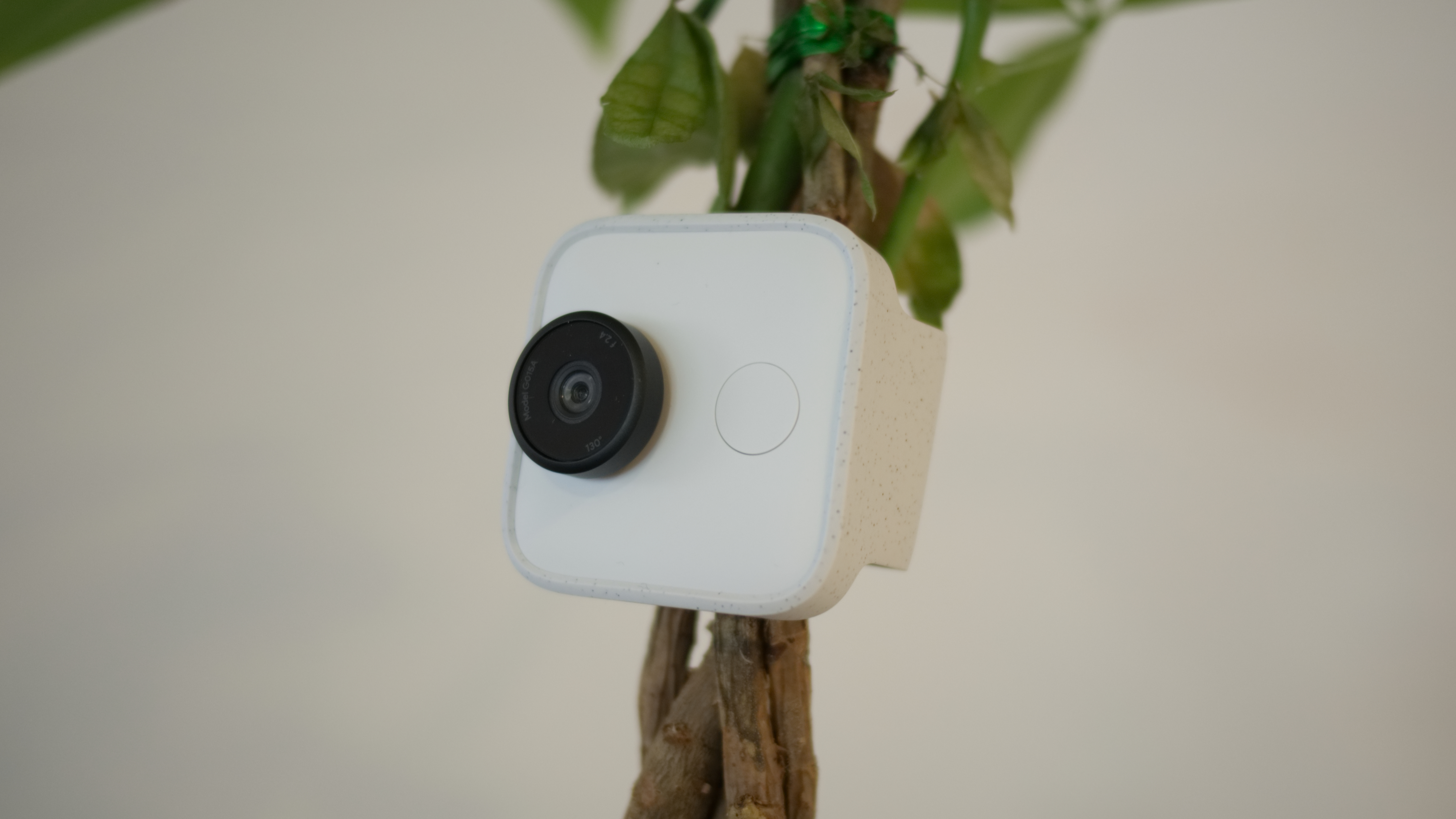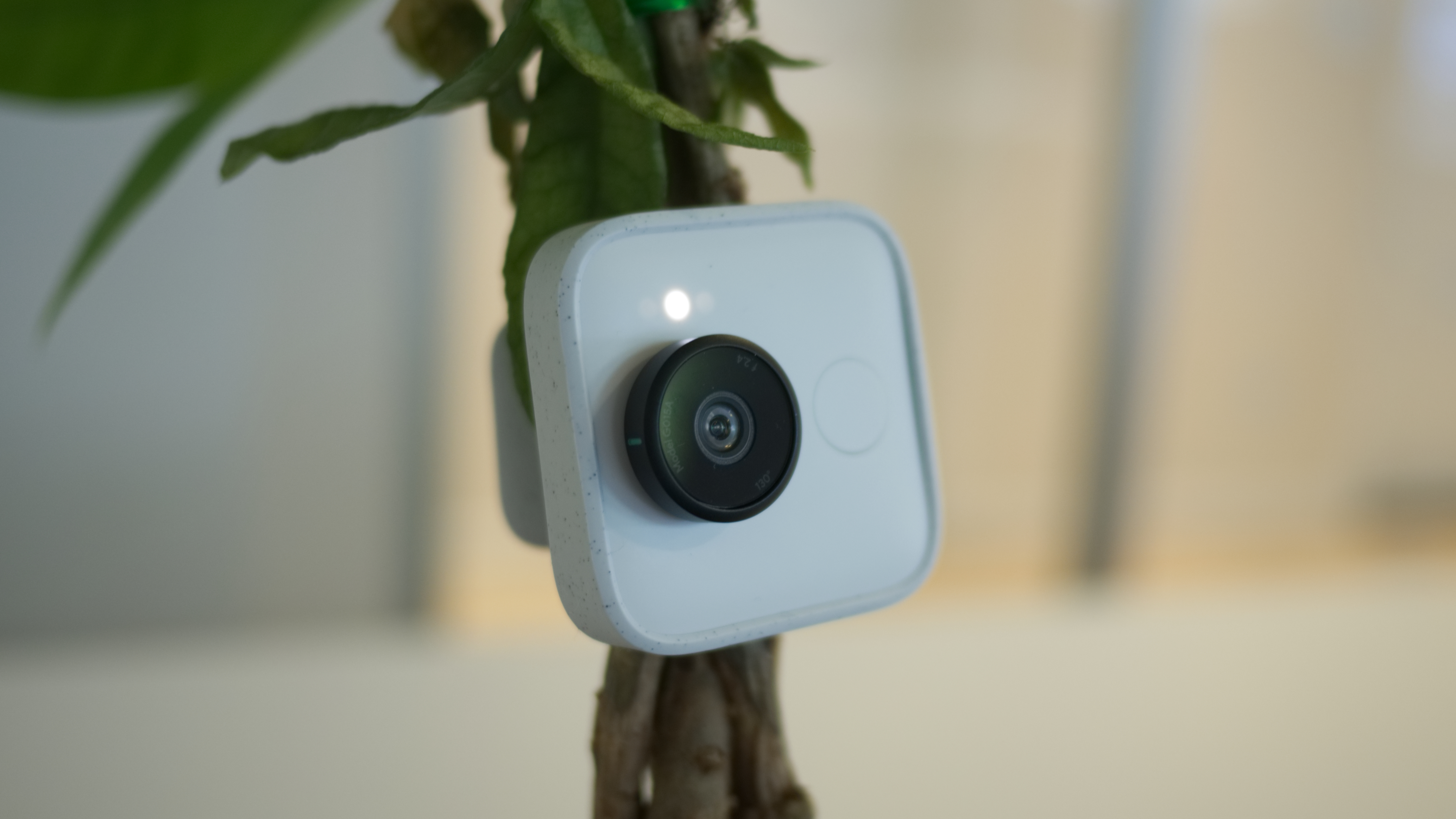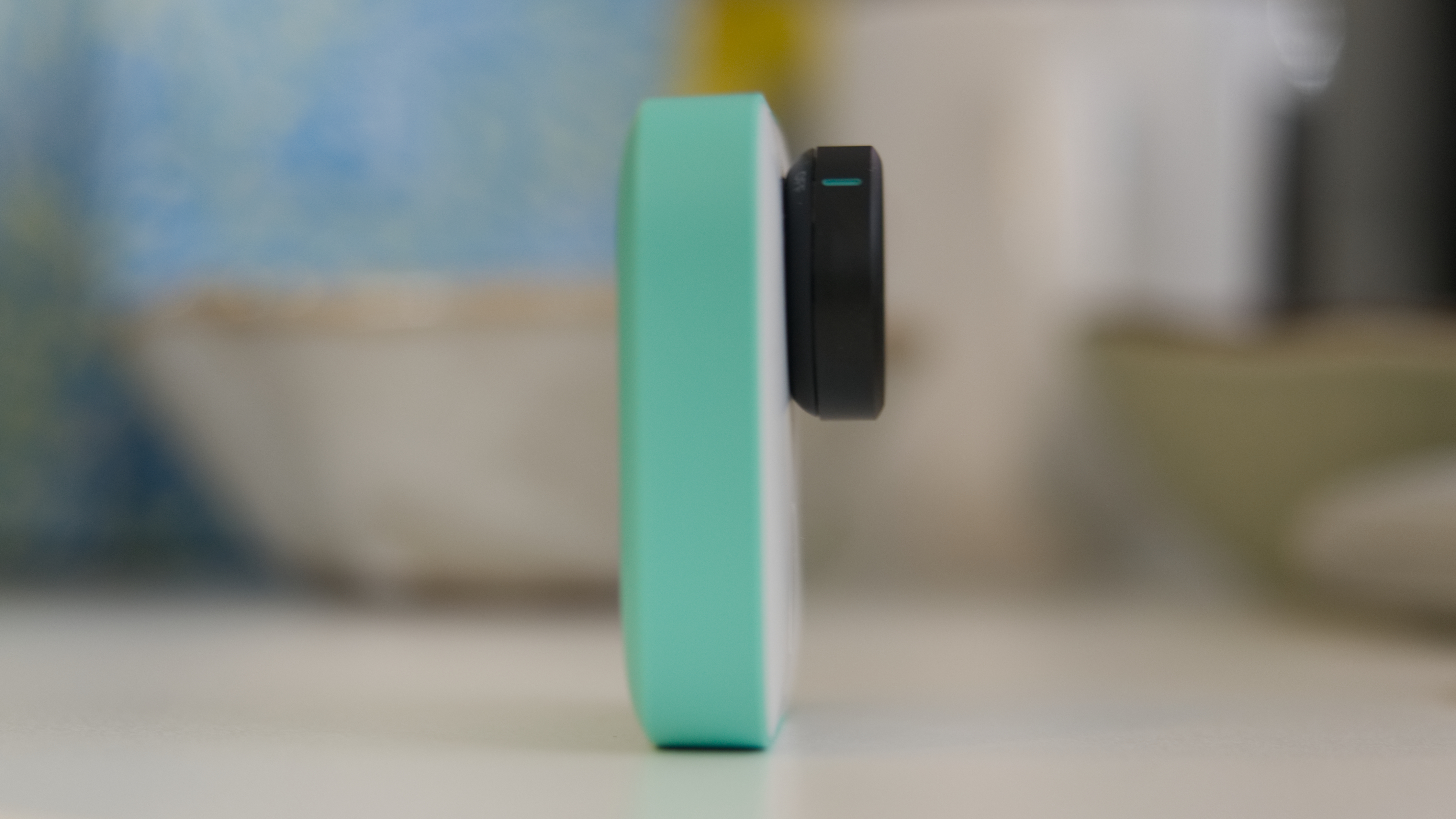Google Clips is a camera, but that’s underselling it a bit. It’s a smart camera that utilizes an eerily good machine learning algorithm to identify, then auto-record scenes containing familiar faces, pets and more.
Similar to a normal point-and-shoot, you turn on Clips when you want to use it. There’s a shutter button, too, which you can press to capture seven seconds of still photos encoded in a shareable video file. But to fully take advantage of Clips is to let it run on auto-pilot.
At its best, Clips catches the moments that you aren’t prepared for, ones that you can’t react quickly enough to capture. We all know the feeling of having just missed out on the perfect photo or video – this camera aims to put an end to that issue. Better yet, Google’s camera succeeds where others don’t by letting you step in front of its lens to participate in your life, even if it can feel a little orchestrated to those in the know of being recorded.

Google isn’t oblivious to the fact that most of us already use phones and DSLR cameras to take photos and videos. While those options excel at capturing pinpoint moments in time, Clips is more of a broad strokes approach by comparison, and is said to improve over time thanks to machine learning.
Putting its smarts aside, this camera will feel trivial for some from a usability perspective. Sure, you can carry it around and capture things that way, though why not just use a phone, which likely houses a more capable lens? Also, I’ve learned that it’s a really big ask to make sure that my life unfolds within the camera’s 130-degree field of view. I often found that, coincidentally, more interesting stuff was always happening off-screen. It takes more effort than I expected to make Clips feel useful.
At $ 249, Clips isn’t the most affordable way of catching the moments that fall between the gaps of your DSLR or phone use. And as of yet, I haven’t captured anything that really shows off its unique ability to know, sometimes better than you do, when’s best to start capturing. But as this camera is still in the learning process, we’re still putting it through the paces, so we’ll be updating this hands-on review with a score and more impressions shortly.

Design
Like other Google products, like Google Home, Google Daydream, and Google Pixel 2, Clips is minimalistic, yet quite expressive in its design. While it’s hard to confuse it as anything but a camera, it certainly looks unique compared to other quick-capture cameras like the Samsung Gear 360, appearing more like a large Tile tracker keyring than something that takes footage.
On its front, Clips’ lens takes up most of the real estate. It’s a clever, intuitive decision to make twisting it work as its power switch, and thanks to the colored indicator, it’s easy to tell when it’s off or on. Not just that, but there are a series of lights that illuminate when powered on to clue you into what the camera’s doing, as well as notify the general public that, “hey, you might be on camera right now”.
Snug beneath the lens is the shutter button, which looks a lot like a fingerprint sensor. Clips is skilled at shooting footage automatically based on what it finds interesting, as instructed by its machine learning algorithm. But Google told us that the main reason behind the button is simply because there are some moments when you’ll have better judgment than Clips will.

Moving to the back, Google’s mini camera is clad in a creamy teal shell that feels built to last. But if don’t want to subject it to scratches or scuffs, you can pop it in the included silicon shell. It’s actually how this camera gets its “Clips” moniker – you can clip it anywhere it will fit. I’ve found that, despite its flexibility, the clip wasn’t able to fit onto much in my apartment. Your mileage will vary, of course. But one thing that the clip is useful for in any situation is as a more stable stand. Clips can stand by itself, but it isn’t so wobbly with the case.
There’s a USB-C charging port on the bottom, and next to it, a reset button puts Clips back to factory default settings.
Digging into the specs of the lens, it’s fixed focus and tuned to work best at six to eight feet away. Things become a little fuzzy when you get closer than that, but it generally still looks good until about a foot away from the lens.
Covered in Gorilla Glass 3 to protect it from rogue keys in the purse and falls, this lens captures JPEG stills at a rate of 15 frames per second (FPS), ranging from six to eight megapixels in quality.
Google’s machine learning algorithm is responsible for hitting record, but it’s also in charge of wrapping these photos up in 1080p footage with image stabilization, encoded in H.264.

This lens has an aperture of f/2.4, which is best suited for capturing in well-lit areas. As we’ve shown in some of our samples, it can handle low-light decently, but it’s definitely not this camera’s forte.
One are that we’re happy with so far is its wide field of view. At 130 degrees, it’s wider than modern smartphones are capable of. We were impressed with how encompassing the LG V30 was, for example, but this captures more of the scene – an essential characteristic for a device that’s set-and-forget.
This tiny camera has 16GB of internal storage built-in, and during our time with it, we haven’t even come close to filling it up. Google actually dared us to fill it to capacity, saying that even the Clips team had struggled to do so during its development.
App, compatibility and interface
Part of the charm of Clips is how it interfaces with its companion app, which is available for all Google Pixel phones, Samsung Galaxy S7 and Samsung Galaxy S8 devices running Android Nougat, and a batch of iPhones running iOS 11, including the iPhone 6, iPhone 6S, iPhone 7, iPhone 8, iPhone X and all Plus variants.
All of the footage that you record is stored on the camera only – not the cloud. But once connected over Wi-Fi direct to your phone, Clips can beam the files over with relative ease and quickness. From the Clips app, you can decide which files to keep and which to delete, including giving users the ability to save particular stills in a clip, and save in file formats, including GIF, MP4 format, the company’s own Motion images, as well as Apple Live Photos.

One particularly interesting setting within the app allows you to train the camera with your Google Photos library. To do this, it downloads a selection of photos from your collection, studies them, learning who and what you usually take pictures of, so that it can better and more quickly identify them when in frame.
Wanting to put Google Clips through its share of paces, we’ve been testing it with a mix of handheld recording and leaving it to catch interesting scenes by itself – the emphasis being on the latter to better train the machine learning algorithm.
It’s hard to put judgment on a product that always claims to be getting better at its core function over time, and that’s why we’re continuing to test it out. But after two weeks of using it, we’ve experienced some middling results, though other testers might have other results.
Interestingly and perhaps somewhat obvious to some, the quality of footage is going to depend on what’s going on in your life. Living a relatively sedated lifestyle with not a whole lot going on? What Clips records isn’t going to be that great. If this applies to you, you may want to rethink if Google’s camera fits into your tech equation.

But no matter your lifestyle, Clips does show off its knack for having a sense of what’s happening in-frame. A few examples below show off some fun action from my cats that I would have otherwise not been able to capture with my smartphone, due to the fact that it just happened so quickly, or that I had my hands full.
Early verdict
After around two weeks spent with the Clips camera, we’ve only seen some of what it can do. It’s true: this device is a slow to unfurl its bag of tricks, and for some who don’t really have an exciting home life or go out on adventures may too rarely see any results worth savoring.
Google says that this camera is made with parents and pet owners in mind, probably because any one else would find it to be pretty bare of an offering. Again, $ 249 is a hearty chunk of cash for any camera, especially one that you’ll need to trust enough to work by itself.
Given that this camera lives or dies by its ability to know when to start recording, we’re going to spend more time with Clips before assigning a final score so that we can continue building up the machine learning algorithm and thus, more fairly judge its performance.